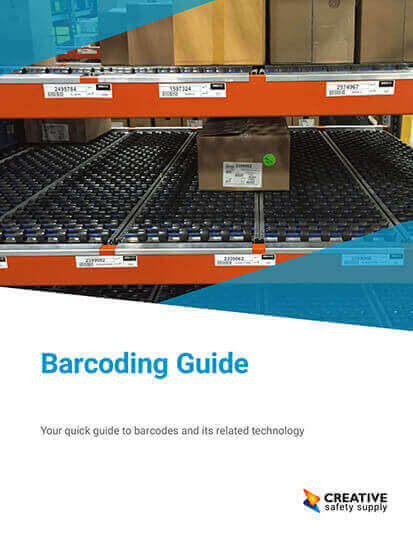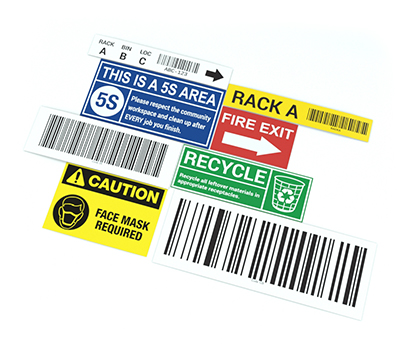Quick Response (QR) codes were first developed to be used in the automotive industry, but today come in all shapes, sizes, and colors. Normally they tend to be square in shape and consist of contrasting black and white pixel patterns which can be read and interpreted by a QR code scanner. They are two-dimensional versions of the traditional barcode but instead of being scanned in retail environments, they can convey a wide variety of information almost instantly to customers with the scan of a mobile phone.
A QR generator is commonly used in situations such as advertising, inventory control, and asset management and you can often spot them printed on packages, brochures, posters, inside stores, at event booths, in magazine ads, on clothes labels, and more. By being able to store a large number of details without taking up the physical space when printing, they are ideal for more complex uses where traditional restraints make portraying information difficult.
Looking to create your QR code? Get a custom QR code in no time with this easy-to-use form.
- Select the information that you want to be stored within the code, whether this is a URL, an email, text messages, telephone numbers, SMS, Wi-Fi information, order details, or vCard.
- Fill in the corresponding form fields and select the error correction level (the higher the level, the less storage capacity of the QR code).
- Your QR code is now ready! Simply tap the “Generate QR Code” to download the graphic and choose a format such as PNG or SVG to print.
Once a QR code has been created and downloaded, no edits can be made to it so double-check for typos and correct language as you go along. If you have made an error or wish to update the final image file, you will need to create a new QR code.
If you need more support or have any questions, do not hesitate to get in touch with our team.
What Are QR Codes Used For?
QR codes were first designed back in 1994 to track vehicles during manufacturing. However, their popularity has boomed over more recent years because QR codes contain a locator, identifier, or tracker points, allowing them to be read faster than standard UPC barcodes. They also feature a much greater storage capacity which has helped to propel their use in the modern-day environment.
A simple QR code image can store up to 7089 digits or 4296 characters (including punctuation and special characters), being more than capable of encoding valuable information such as website URLs and contact information such as names and addresses.
When it comes to designing the QR codes, it is important to note that the more data that you choose to add, the bigger the QR code is produced, and its structure becomes more complex. If you are looking to create a small and subtle QR code that you can include on a small surface area such as food packaging or clothing labels, aim to keep the data you wish to encode as minimal as possible.
If a printed QR code becomes damaged or faces wear and tear, the structure may still function as it should since the data keys include duplications. This means that up to 30% of the code can be completely damaged without affecting its readability on scanners, reducing the risk of important data becoming unreadable.
How Are QR Codes Used?
Nowadays, the modern capabilities of smartphones have an integrated QR code reader in the phone camera (such as Bixby Vision for Samsung and the iOS 11 operating system for Apple). If your phone does not have a QR code reader, this does not prevent you from being able to scan QR codes as there are plenty of apps available which can be downloaded for free from the app store on iPhone or Android and used at the click of a button.
Once somebody scans a QR code using their mobile device, it works similarly to barcodes at the supermarket in the way that each code consists of unique designs which represent different pieces of information, translating into human-readable data within just seconds without the need for WiFi.
QR Code Applications
QR codes are extremely versatile and can be printed on business cards, product packaging, billboards, inventory tags, or even t-shirts. Since they can be scanned from your average smartphone and will scan at whatever angle you are holding the device, they are versatile solutions that are a great way to convey information in the modern age.
Some examples of how a QR code could be used include:
- Links/URL: Once someone scans the code, their internet automatically redirects users to specific URL landing pages.
- WiFi: By encoding the SSID, encryption types, and password, the QR code will automatically log the user into the WiFi software.
- Text: Load messages onto the QR code that will appear once scanned; great for events or conferences.
- Email: Add personal or business email addresses that will be added to the user’s contact details list after being scanned.
- Other: QR codes are still reliably used in manufacturing and inventory tracking, and QR codes have been used around the world from gravestones (in Japan) to train tickets (in China) and on coins (by The Royal Dutch Mint).
The Benefits of Switching To QR Codes
In such a busy world where marketing materials and messaging surround us without us even realizing it, standing out from the competition by giving reasons to pick your brand instead of others is more difficult than ever. By adapting to the times and utilizing effective ways of making yourself noticed in the foreground, a business can continue to create QR code campaigns that center around its online presence and thrive in the saturated marketplace.
Stand out from the crowd
To make your business appear ahead of the competition, differentiating yourself by sparking the interest of potential customers as well as maintaining engagement among an existing audience is paramount. If used correctly and creatively, QR codes can be used as part of branding for everything from gaining exclusive offers to learning more about a business's offerings.
Reach busy passers-by
We all live a fast-paced lifestyle nowadays, not having much time to spare for learning about a new company or researching our options. QR codes are perfect for targeting busy consumers on the go, being used as an addition to store signage or print advertising so they do not have to clutter the space and deter passers-by from reading it. Instead, those who are interested to know more can quickly browse the important information such as the company logos and key messages before scanning the code to find out more at their own pace, whether that be through signing up for a newsletter, saving discount coupons, checking the price on flyers, or just browsing the menu to plan dinner whilst they are on their way to another location.
Interact with your customers
Instead of expecting people to convert to your brand from some 2D advertising, utilize the power of the web to create a more interactive experience. QR codes can quickly turn static content into dynamic pages that can lead people to social media profiles, online forms, PDF files, pictures, or YouTube videos where they can engage and see a more human side of a brand.
Easier to track
If you are using QR codes as a part of a marketing campaign, they allow you to track analytics so you can measure performance. By giving insights into the scan statistics, you can better understand whether a campaign was successful and use the feedback to get some tips for the next.
No business cost
When it comes to creating dynamic content that will help a business stand out, this normally comes with quite the price tag! By generating QR codes that direct to a website URL such as a blog or online platforms such as Instagram, this can all be set up completely free of charge to supercharge marketing campaigns on a budget.


